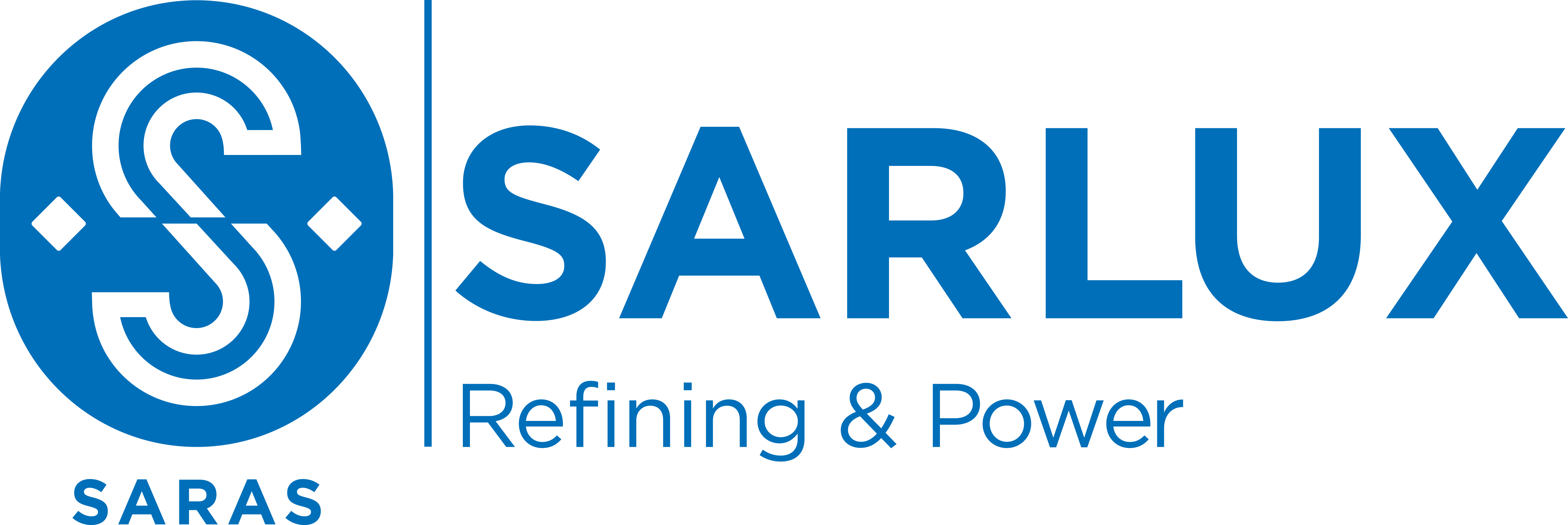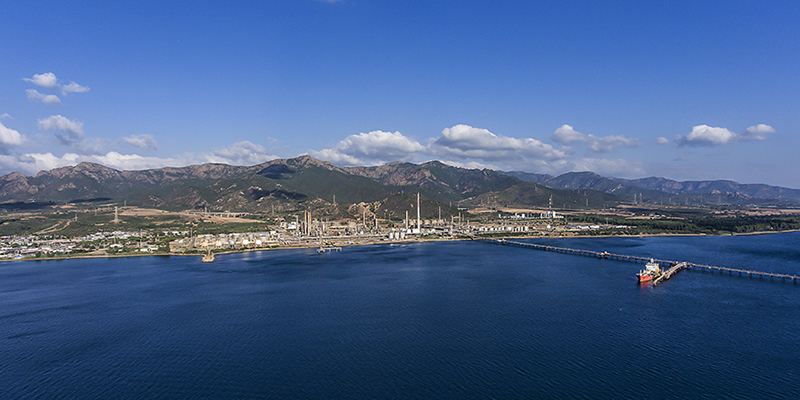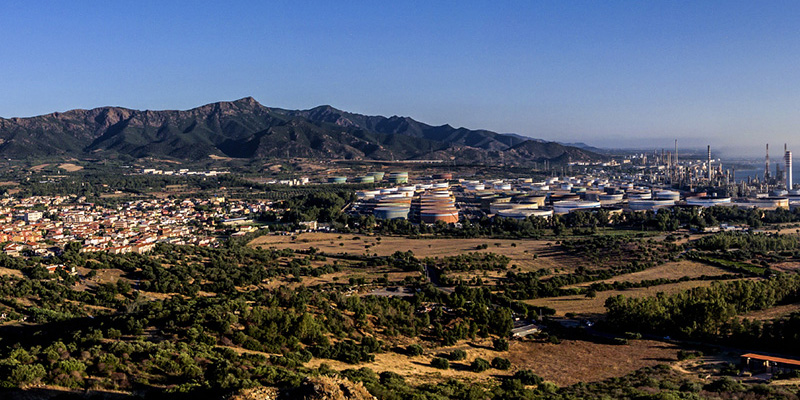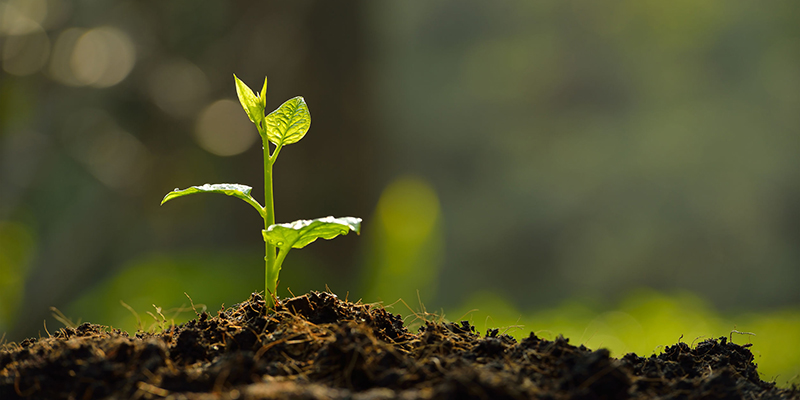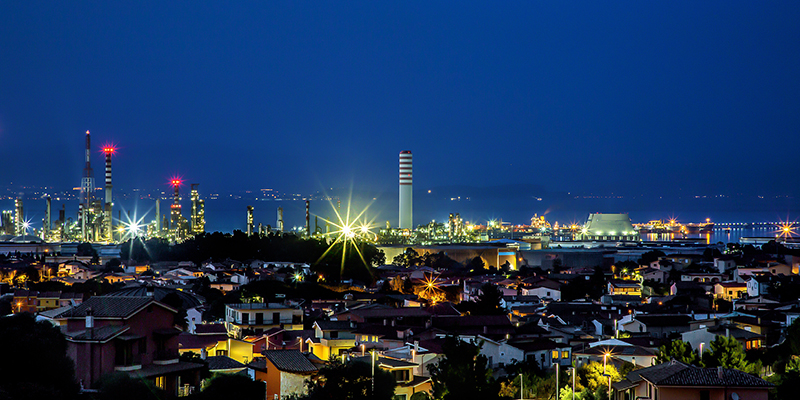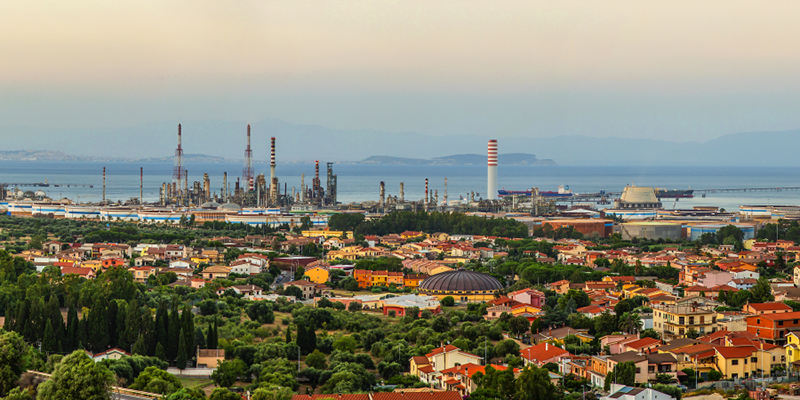Air
ENVIRONMENT
Commitment to air quality. The Integrated Environmental Authorisation (IEA) is the blueprint for this policy, which also sets increasingly stringent limits on atmospheric emissions.
In 2009, the Ministry of the Environment issued Sarlux – the first refinery to obtain it in Italy – with this important authorisation to operate the facility on account of its compliance with emission limits. In 2017, following a comprehensive review of the site, Sarlux obtained the renewal of its AIA valid until 2033.

AIR QUALITY MONITORING
Air quality and the reduction of air emissions are key priorities for Sarlux because they are linked to the health of workers and of the nearby communities.
Fixed measurement stations
Air quality outside the refinery is controlled by two monitoring networks. Sarlux owns and operates four measurement stations, while ARPAS (the Regional Environmental Protection Agency) operates the three sensors owned by the Region of Sardinia.
The total network provides quasi-real time data on changes in pollutant concentrations in air, to ensure that their levels are always below regulatory limit values. This constant control ensures fast response in case of need.
The data measured by the sensors includes emissions from all sources in the area, including industrial, urban and non-urban emissions, such as those from vehicle traffic.
Each of the four Sarlux stations (Villa d’Orri, Sarroch, Porto Foxi and the National storage facility) and the ARPAS stations are equipped with analysers that continuously measure the air concentrations of the following pollutants: sulphur dioxide (SO2), nitrogen oxides (NOx), dust, PM10, carbon monoxide (CO), carbon dioxide (CO2) and other pollutants such as hydrogen sulphide (H2S), benzene (hydrocarbons) and ozone.
The station located near the National storage facility is also equipped with a weather station.
Location of the ARPAS air quality monitoring stations
Biological markers
Air quality can also be monitored using biological markers and biodiversity studies.
Epiphytic mosses, i.e. those growing on tree trunks, are the most commonly used biomarkers for this type of analysis, because the level of biodiversity is an indicator of the environment’s health: the monitoring methodology is based on a measurement of biodiversity, i.e. the abundance of different moss species.
For some years, the Department of Botanical Sciences of the Faculty of Mathematical, Physical & Natural Sciences of the University of Cagliari has been monitoring the condition of the vegetation over a very wide area covering the inland region of Sarroch. It also uses epiphytic mosses as biomonitors of air quality.
Air quality is assessed using the Index of Atmospheric Purity (IAP). The tests have confirmed that in 2018 too air quality was in the middle values of the IAP scale (classes from 1 to 7).
The field data collected has shown that the bioaccumulation of these substances is lower than the Italian and European annual averages.
Location of the air quality biomonitoring stations managed by the University of Cagliari
For the full data on Sarlux emissions, see our 2025 Environmental Statement

AIR EMISSION CONTROL
Over time, the Group has taken major measures for continuous improvement, including selection of raw materials, improved fuel quality and energy efficiency programmes, to reduce the amount of fuel burnt and hence air emissions.
Our focus on improving air quality and reducing atmospheric emissions has led us to make several technology upgrades to the plants, often well in excess of legal requirements.
Our benchmark is the Best Available Technologies.
An important role is also played by operating procedures and systems, which ensure constant improvement in the environmental compatibility of site activities.
Our efforts are paying off: refinery emissions, certified by independent bodies, are well below the legal limits set out in the Integrated Environmental Authorisation.
For the full data on Sarlux emissions, see our 2025 Environmental Statement
Sources: Sarlux Environmental Statement 2025 and Saras ESG Report 2024

